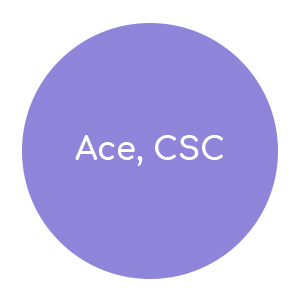Action
Mechanism of action
Ace, CSC, is a three-component fungicide ensuring effective preventive protection and curative effect against economically important cereal crop diseases, even in cases of an increased infection load. By suppressing pathogen activity at all stages of development (when pathogens penetrate the plant, grow and develop inside plant tissues and form spores), the risks of plant infection and disease spread are reduced. The product is recommended both for prevention and symptomatic treatment, from tillering to blooming. Ace, CSC, has a physiological effect on the growth and development of plants, preserves the best yield potential and improves the quality of grain without mycotoxins.
Tebuconazole is a third-generation triazole. It has a systemic translocating action. It has the broadest spectrum of action against phytopathogens, with protective, eradicating and curative properties. Tebuconazole is distributed acropetally in the plant. It quickly penetrates the waxy layer and is distributed throughout the plant, providing a quick onset of action (stop effect) with a subsequent progressive effect on pathogens, eradicating the disease completely.
Tebuconazole inhibits the biosynthesis of ergosterol in pathogen cell membranes by suppressing C14 demethylation. The synthesis of D5-sterols also has an effect on metabolism, which distinguishes the active substance from other triazoles.
Pyraclostrobin, an active substance of strobilurins class, has a contact and translaminar activity, with a protective, curative and eradicating effect against a wide range of pathogens, including Oomycetes. Pyraclostrobin is quickly absorbed by plants, accumulating in the cuticular waxy layer of the leaf. As a result, the active substance accumulates on the leaves’ surface. It is not washed away by precipitation and provides long-term protection against fungal infections. Good translaminar movement across the leaf allows the control of pathogens on both sides of the leaf. Pyraclostrobin is most effective when used for preventive treatment.
Pyraclostrobin inhibits mitochondrial respiration of fungal pathogens. As a result, it significantly reduces the cellular energy (ATP) required to maintain pathogen vital functions, ultimately leading to their death. It inhibits the fungal spore invasion into plant tissues and blocks mycelium growth. It is a potent antisporulant.
Pyraclostrobin actively influences the biological and physiological reactions of plants, resulting in the green leaf effect, effective preservation of green matter and nutrient supply for a high-quality crop.
Prothioconazole is a triazolinthione, a subclass of active substances with improved triazole properties.
It has a systemic action with an immunising effect.
It shows protective, eradicating and curative properties. It inhibits the demethylation of sterol biosynthesis and violates the selectivity of pathogen cell membrane permeability.
Prothioconazole penetrates the plant more slowly than tebuconazole, providing long-lasting protection. It is distributed acropetally in the plant.
Prothioconazole has a green leaf effect, enhances drought resistance and influences the formation of grain quality indicators. This is the only triazole for which this physiological effect has been reported.
The innovative NANOformulation (colloidal solution concentrate) ensures:
• High quality and stability of the working solution over time: not subject to separation, precipitation, formation of suspensions, which affects the performance of equipment components and spraying efficiency
• Maximum coverage and distribution of the active substance: high spreading coefficient, complete wetting of the treated surface with a high degree of adhesion
• Rapid and deep penetration into the treated surface: accelerated effect on pathogens in all areas of infection containment
• High resistance to washout by precipitation
• The best target properties of active ingredients: increased biological efficacy compared to products based on conventional formulations
Protective effect period
The product has a rapid onset of action, followed by long-term protection for up to 4 weeks.
General information
Chemical class
triazoles, strobilurins, triazolinthiones
Formulation
colloidal solution concentrate
Hazard class
hazard class 2, highly hazardous substance
Shelf life
3 years
Storage temperature range
−15°C to +35°C
Packaging
PE container 5L, 10L
Registrant
Schelkovo Agrohim, Russia
Manufacturer
Schelkovo Agrohim, Russia

